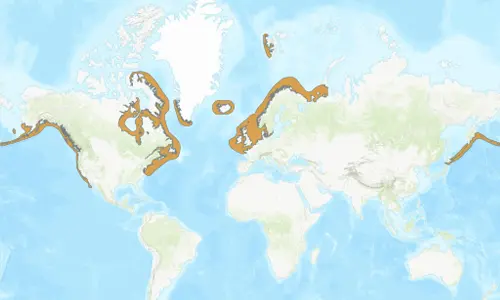Atlantic Harbor Seal: hereâs the scoop
threats
Harbor seals are one of the most widespread of the pinnipeds. Historically, harbor seals have suffered population drops due to viral diseases similar to distemper. Because harbor seals haul out on nearshore and coastal mainland sites, they are exposed to terrestrial wild carnivores, pets and feral animals, and waste from human populations, which creates an increased risk of exposure to communicable diseases. Harbor seals are also threatened by water pollution and commercial fishing practices.
Committed to Conservation
The Buttonwood Park Zoo participates in the Association of Zoos and Aquariums Species Survival Plan (SSP) for Atlantic Harbor Seals. The goal of the SSP is to cooperatively manage animal populations within AZA accredited zoos to ensure the sustainability of a healthy and genetically diverse population while enhancing the conservation of this species in the wild.
Insider Info
Luna, who was born on the night of a lunar eclipse and named after Luna Park on Coney Island, is a lighter grey with darker spots. Luna tends to be more reserved and shy. Conway, a little seal with lots of personality, sports darker coloring and more obvious white markings. Conway was named after the late Dr. William Conway, an iconic conservationist who retired as the president and general director of the Wildlife Conservation Society, the organization that manages the Brooklyn Aquarium.
Species
Atlantic Harbor Seal
Scientific name
Phoca vitulina
Habitat
Anywhere from cool, temperate waters to cold, arctic and sub-arctic coasts. They spend half their time in the sea and half on land.Â
Diet
Piscivorous. Feeding primarily on fish, squid, crustaceans, and molluscs
Life Expectancy
25 – 30 years
Did you know?
Seals will nap at the surface of the water in a position called âbottlingâ. They bob up and down in the water like a buoy, with just their heads above the surface!

Range
They have the widest distribution of any seal and live in both the North Atlantic and Northern Pacific oceans.
Conservation status
Least Concern
Widespread and abundant